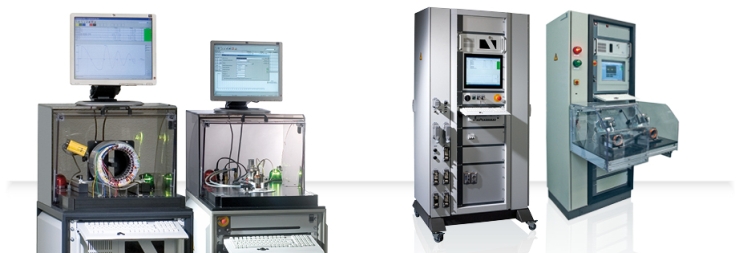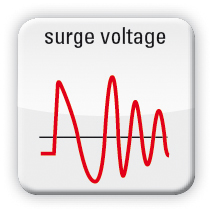MTC 3 Automatic Production Tester for Electric Motor Stators
The fully automatic MTC3 stator testers test your windings reliably and quickly for possible insulation faults via our patented surge voltage test. After connecting the test object completely the test is performed with an automatic switching of the connections and the test methods. The MTC3 evaluates each test step. At the end of the complete test process it provides a clear and reproducible GO or NO GO-statement.

Regarding measuring, controlling, and storing we rely on the integration of PCs in our winding testers. By using well-proven MicrosoftR-technology we are able to provide a clear, well-arrranged presentations of the test results. For the setter there are comprehensive entry and configuration options available.
The numerous statistical analysis of MTC3-testers support you regarding quality control. By means of the various optional protocols you can document the tested quality towards your customers.
The MTC3-Class – efficient production without compromises
Typical tests carried out by the MTC3

|
The surge voltage test is ideal for detecting turn-to-turn faults and insulation faults within a winding. No other test method is able to supply test results on the insulation of a winding system of a similar quality.
This test can also be extended by a partial-discharge test. |

|
High Voltage AC. The high-voltage test AC (alternating voltage) serves for testing the electric insulation and voltage proof of clearance and leakage paths at electric components, modules, machines, devices and systems according to various national and international regulations. |

|
High Voltage DC. The high-voltage test DC (direct voltage) serves for testing the electric insulation and voltage proof of clearance and leakage paths at electric components, modules, machines, devices and systems according to various national and international regulations |

|
The PE test is performed with devices of protection class I. The PE resistance is checked to see if it is below a limit value defined in the standards. The test detects whether possible leakage currents inside the test object are grounded correctly. |
|
|
The insulation resistance test can be performed at devices of protection class I as well as protection class II. It checks, whether the ohmic insulation resistance exceeds the limit value stipulated in the standards. The test is to detect if too high leakage currents could occur in the test object. |
|
|
The residual-voltage test serves for detecting the residual voltage at various touchable connections of the test object according to standards. According to the standards the level of the residual voltage is measured after a certain time. Residual voltages occur, for example, inside the test object through charging. |
|
|
In principle the short circuit test is an ohmic resistance measurement. This test is usually performed automatically before an electric functional test in order to find out if there is a short circuit between the conductors. This test prevents voltage being switched to a test object which already has a major short circuit. Thus damage of the test object can be avoided. This test can be performed at 1- as well as at 3-phase test objects. |
|
|
In general, the functioning test serves for detecting the charging current of a test object. Considering a certain tolerance, this charging current is compared and automatically evaluated with a set value. Depending on the application it is also possible to measure and evaluate the power, the phasing, and other electrical parameters. |






